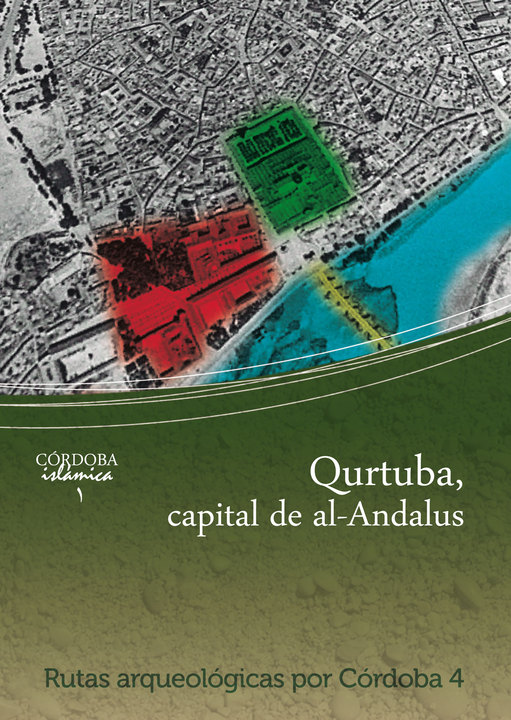Books and publications
Index / Activities / Books and publications / Archeological tours through Islamic Cordoba
Archeological tours through Islamic Cordoba
March 23, 2015
CóRDOBA
Casa Árabe is collaborating on the publication of five guides to learn more about the Medina, the Axerquía, water, forts and small mosques from the Islamic era.
Casa Árabe and the “Arqueología somos todos” cultural association of the University of Cordoba have created five educational guides in which they propose different archeological tours of Islamic Cordoba. Each guide is devoted to a specific topic: Medina, Axerquía, water, forts and mosques. They all propose a specific itinerary to see the historical marks still left behind inside the city.
All of the tours are explained using regular language that is also based on the most recent and thorough scientific studies, including a wide range of maps and diagrams, three-dimensional reconstructions, etc. which help to understand the historical reality of Islamic Cordoba better. Likewise, they are adapted to different reading levels: from adults and specialized audiences, who may consult a basic scientific bibliography, to the youngest of readers, for whom different games related with the main theme are included.
The five archeological tours are as follows:
Qurtuba, capital of Al-Andalus
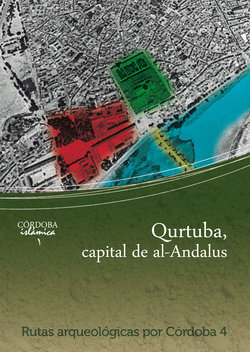 More than one thousand years ago, Qurtuba was the capital of Al-Andalus and the most important political and cultural center throughout the Western Mediterranean. It became a hub for trade and communications at the highest level and experienced its greatest splendor during the Umayyad Caliphate (929-1031), the time when the city reached its greatest expansion.
More than one thousand years ago, Qurtuba was the capital of Al-Andalus and the most important political and cultural center throughout the Western Mediterranean. It became a hub for trade and communications at the highest level and experienced its greatest splendor during the Umayyad Caliphate (929-1031), the time when the city reached its greatest expansion.
This itinerary leads us through some of the most important milestones which can still be seen inside the old city walls, witnesses to more than 500 years of Muslim presence in the city.
Fortresses for uncertain times
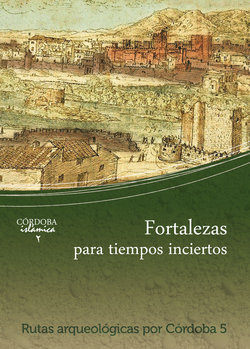 The use of fortifications, especially city walls, did not always mean an attack was feared, because they could also be used for other purposes. However, in uncertain times, forts became a priority within the city and territory to uphold the status quo of society and/or those ruling it.
The use of fortifications, especially city walls, did not always mean an attack was feared, because they could also be used for other purposes. However, in uncertain times, forts became a priority within the city and territory to uphold the status quo of society and/or those ruling it.
This tour focuses on some of the Islamic fortifications that still remain in the city so as to convey one essential idea: when there were internal or external threats, the efforts to defend the city increased.
Water in the medina
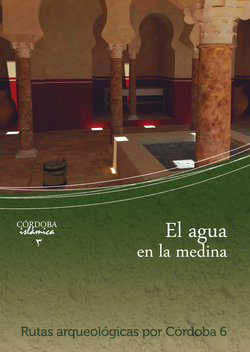 Long before the birth of the first civilizations, water was already a vital factor for the subsistence of living beings. Obtaining, distributing, using and draining water have always been constant concerns for mankind. In Islam, besides its physiological aspects, water also took on connotations of hygiene and purification of the utmost importance.
Long before the birth of the first civilizations, water was already a vital factor for the subsistence of living beings. Obtaining, distributing, using and draining water have always been constant concerns for mankind. In Islam, besides its physiological aspects, water also took on connotations of hygiene and purification of the utmost importance.
In today’s Cordoba, there are still some remains of the installations used to manage water in the ancient Islamic city. Throughout this tour, we will visit some of the most notable of them and get a general overview of hydraulics in Al-Andalus.
The mosques of Qurtuba
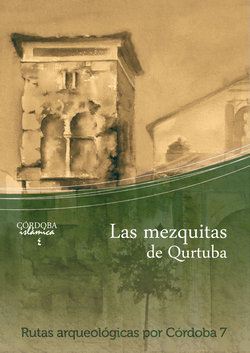 Mosques are the most obvious material form given to Islamic civilization, as well as a clear territorial indicator of its presence. They are also fundamental to carrying on everyday life in cities where Islam predominates. However, in the specific case of Cordoba, knowledge about secondary mosques has been overshadowed by the magnificence and historical importance of the Great Mosque.
Mosques are the most obvious material form given to Islamic civilization, as well as a clear territorial indicator of its presence. They are also fundamental to carrying on everyday life in cities where Islam predominates. However, in the specific case of Cordoba, knowledge about secondary mosques has been overshadowed by the magnificence and historical importance of the Great Mosque.
Through this tour, we will get to know more about the small mosques that existed in Cordoba and understand the role played in the urban layout of Madinat Qurtuba and the life of its inhabitants.
La Axerquía
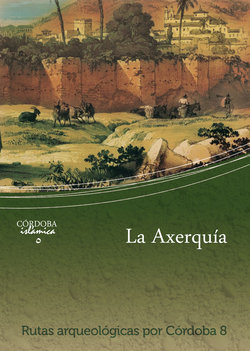 Today’s Ajerquia or Axerquia in Cordoba owes its name to the Islamic “Eastern Borough” (al-Rabad al-Sharqui), or more specifically the areas outside of the city walls nearest the walled medina, as of the eleventh century.
Today’s Ajerquia or Axerquia in Cordoba owes its name to the Islamic “Eastern Borough” (al-Rabad al-Sharqui), or more specifically the areas outside of the city walls nearest the walled medina, as of the eleventh century.
This urban space underwent major Islamic occupation, from the time of the emirs up to Christian conquest. Therein lie important mosques, almunias and luxurious homes, but also poorer neighborhoods with productive and funerary spaces. On this tour, you will visit some of these remains inside and outside the city walls, which comprise the everyday reality of this portion of the city from Al-Andalus.
All of the tours are explained using regular language that is also based on the most recent and thorough scientific studies, including a wide range of maps and diagrams, three-dimensional reconstructions, etc. which help to understand the historical reality of Islamic Cordoba better. Likewise, they are adapted to different reading levels: from adults and specialized audiences, who may consult a basic scientific bibliography, to the youngest of readers, for whom different games related with the main theme are included.
The five archeological tours are as follows:
Qurtuba, capital of Al-Andalus
 More than one thousand years ago, Qurtuba was the capital of Al-Andalus and the most important political and cultural center throughout the Western Mediterranean. It became a hub for trade and communications at the highest level and experienced its greatest splendor during the Umayyad Caliphate (929-1031), the time when the city reached its greatest expansion.
More than one thousand years ago, Qurtuba was the capital of Al-Andalus and the most important political and cultural center throughout the Western Mediterranean. It became a hub for trade and communications at the highest level and experienced its greatest splendor during the Umayyad Caliphate (929-1031), the time when the city reached its greatest expansion. This itinerary leads us through some of the most important milestones which can still be seen inside the old city walls, witnesses to more than 500 years of Muslim presence in the city.
Fortresses for uncertain times
 The use of fortifications, especially city walls, did not always mean an attack was feared, because they could also be used for other purposes. However, in uncertain times, forts became a priority within the city and territory to uphold the status quo of society and/or those ruling it.
The use of fortifications, especially city walls, did not always mean an attack was feared, because they could also be used for other purposes. However, in uncertain times, forts became a priority within the city and territory to uphold the status quo of society and/or those ruling it.This tour focuses on some of the Islamic fortifications that still remain in the city so as to convey one essential idea: when there were internal or external threats, the efforts to defend the city increased.
Water in the medina
 Long before the birth of the first civilizations, water was already a vital factor for the subsistence of living beings. Obtaining, distributing, using and draining water have always been constant concerns for mankind. In Islam, besides its physiological aspects, water also took on connotations of hygiene and purification of the utmost importance.
Long before the birth of the first civilizations, water was already a vital factor for the subsistence of living beings. Obtaining, distributing, using and draining water have always been constant concerns for mankind. In Islam, besides its physiological aspects, water also took on connotations of hygiene and purification of the utmost importance. In today’s Cordoba, there are still some remains of the installations used to manage water in the ancient Islamic city. Throughout this tour, we will visit some of the most notable of them and get a general overview of hydraulics in Al-Andalus.
The mosques of Qurtuba
 Mosques are the most obvious material form given to Islamic civilization, as well as a clear territorial indicator of its presence. They are also fundamental to carrying on everyday life in cities where Islam predominates. However, in the specific case of Cordoba, knowledge about secondary mosques has been overshadowed by the magnificence and historical importance of the Great Mosque.
Mosques are the most obvious material form given to Islamic civilization, as well as a clear territorial indicator of its presence. They are also fundamental to carrying on everyday life in cities where Islam predominates. However, in the specific case of Cordoba, knowledge about secondary mosques has been overshadowed by the magnificence and historical importance of the Great Mosque. Through this tour, we will get to know more about the small mosques that existed in Cordoba and understand the role played in the urban layout of Madinat Qurtuba and the life of its inhabitants.
La Axerquía
 Today’s Ajerquia or Axerquia in Cordoba owes its name to the Islamic “Eastern Borough” (al-Rabad al-Sharqui), or more specifically the areas outside of the city walls nearest the walled medina, as of the eleventh century.
Today’s Ajerquia or Axerquia in Cordoba owes its name to the Islamic “Eastern Borough” (al-Rabad al-Sharqui), or more specifically the areas outside of the city walls nearest the walled medina, as of the eleventh century.This urban space underwent major Islamic occupation, from the time of the emirs up to Christian conquest. Therein lie important mosques, almunias and luxurious homes, but also poorer neighborhoods with productive and funerary spaces. On this tour, you will visit some of these remains inside and outside the city walls, which comprise the everyday reality of this portion of the city from Al-Andalus.

